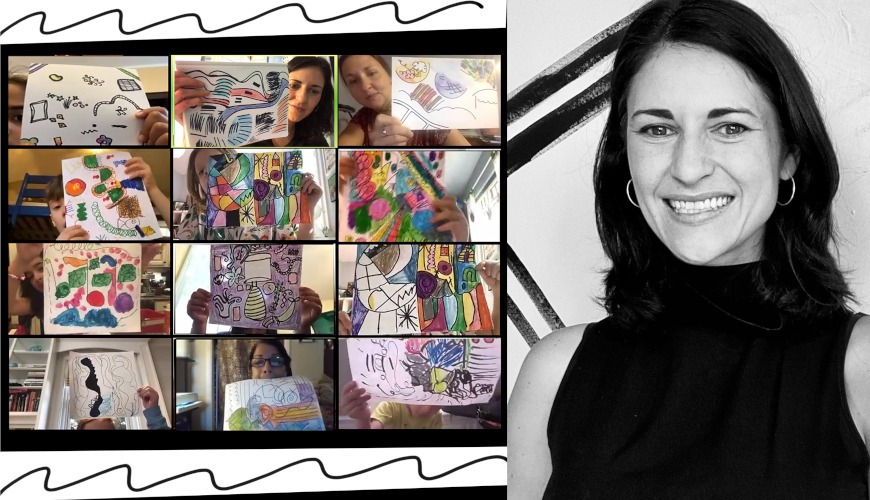PITTSBURGH – Most people believe that art class in grades K-8 is about teaching a child to paint or draw or shape something out of clay. At the Campus Laboratory School of Carlow University, art class can be much more, and a new collaboration between the school, Carlow’s education department and a local artist and gallery owner has the potential to influence not only art and creativity, but wellness, science and technology, too.
The local artist and studio owner, Sarah Zeffiro, who earned her master’s in art education from Carlow in 2017, has begun a year-long residency at the Campus Laboratory School, where she will collaborate with Leigh Roche, the art teacher at the school, and the Carlow University Art Gallery. Throughout the year, they will tap into the expertise of Carlow faculty and as well as create learning and teaching opportunities for Carlow graduate and undergraduate students.
“There will be a lot of opportunities throughout the year for Carlow faculty and students to help in many special ways,” said Zeffiro, who is the owner and art director at Zeffiro Art. “This project is not just for kids. All ages can participate.”
At its roots, the project is about telling and sharing stories mostly through 2-D and 3-D artwork, but it will also include reading, writing, science and wellness.
“Play, cognition, curiosity and mindfulness all play a part in learning through art,” said Roche, who earned her certification in art education from Carlow. “Opportunities for students to tap into their own knowledge and experiences through all those processes help build student voice and agency. I ask students all the time: ‘What do you see? What do you think? What do you wonder?’ Just to get them in the mindset that their ideas have value, and their ideas will help them engage with and understand art and artists, and through that, understand themselves and connect with others.”
Some of the most personal life experiences can be expressed through art, but the very nature of these experiences and the age of the students involved can make them shy about sharing with others, according to Zeffiro. One of the goals of the collaboration is to break through that shyness and build self-esteem and empathy.
“We build our own stories through art,” said Zeffiro, who has been an art educator for Carnegie Museum of Art since 2002. “As we build those stories, we build confidence in ourselves and learn to shape our stories and not be afraid.”
The year-long project will be titled “Love is Colorful: A K-8 Storytelling Project,” which is designed to develop student voice and empathy. It will culminate in a community mural.
While the pandemic has effected how the classes are taught, Zeffiro and Roche are confident that art can be taught remotely when necessary.
“Everything is different now, and the world we knew is not the same, so we are adapting and creating in both modalities – face to face and in the digital art room on zoom,” Roche said.
Before this collaboration was conceived, Zeffiro developed an Instagram series about teaching art and explaining different techniques step-by-step verbally. It was good practice for teaching remotely as well as face-to-face.
Both Zeffiro and Roche said they are constantly engaging and asking questions of their students whether they are teaching in the art room or through cyber space. Either way, they envision a fulfilling and engaging experience for their students.
“The projects are multi-layered,” Zeffiro said. “They are going to have to work, but it will be fun, too.”
Throughout the course of this academic year, as “Love is Colorful” takes shape cognitively, visually, and artistically for their students and themselves, the goal is to build empathy in the community. The hope is that empathy will extend beyond the walls of the Campus Laboratory School.
“We are a community of learners – at all times. The”Love is Colorful Project,” especially currently, is critical,” Roche said. “Everyone has been through life-altering things because of this pandemic. There has been a certain amount of trauma in the uprooting of our lives and ‘normal’ routines – and this goes for the children especially. We are vulnerable to the virus; we might have to change again and readjust our lives. The moment begs for that empathy. We are all vulnerable not only through our art but as humans just living in this space and time.”
More information
- Campus Laboratory School of Carlow University.
- Follow the “Love is Colorful Project” on Instagram
- Follow Zeffiro, visit @zeffiroart on Instagram, Twitter or Facebook.
